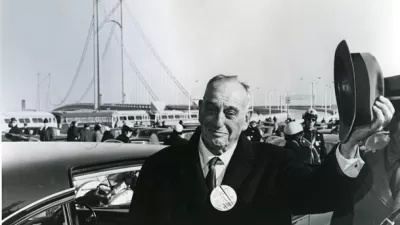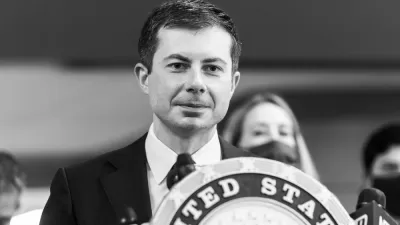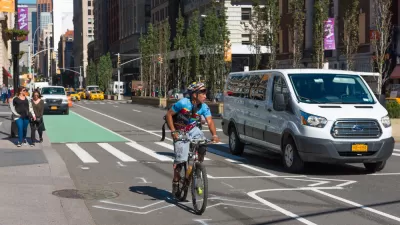A new exhibit at the Cooper Union revisits architect Paul Rudolph's vision for a megadevelopment built around Robert Moses' expressway project that would have destroyed much of SoHo and Tribeca.
From the Cooper Union's exhibition notes:
"Rudolph envisioned an approach to city planning that would conceive of movement throughout a city as the most common shared experience; multi-use transportation networks would be integrated into one design that would replace plazas as the prevailing urban design element. Plans for the LME therefore included not only an underground highway but also elevators and escalators connecting to the subway system, living spaces, a moving walkway, parking lots, and shared public spaces."
Paul Goldberger at The New Yorker comments:
"It was ridiculous in some ways, a futuristic city of the absurd. It ignored the streets, the lifeblood of New York's urbanism, in favor what seems today like a brave new world of anti-urbanism."
FULL STORY: Paul Rudolph’s Manhattan Megastructure

Planetizen Federal Action Tracker
A weekly monitor of how Trump’s orders and actions are impacting planners and planning in America.

Maui's Vacation Rental Debate Turns Ugly
Verbal attacks, misinformation campaigns and fistfights plague a high-stakes debate to convert thousands of vacation rentals into long-term housing.

Restaurant Patios Were a Pandemic Win — Why Were They so Hard to Keep?
Social distancing requirements and changes in travel patterns prompted cities to pilot new uses for street and sidewalk space. Then it got complicated.

In California Battle of Housing vs. Environment, Housing Just Won
A new state law significantly limits the power of CEQA, an environmental review law that served as a powerful tool for blocking new development.

Boulder Eliminates Parking Minimums Citywide
Officials estimate the cost of building a single underground parking space at up to $100,000.

Orange County, Florida Adopts Largest US “Sprawl Repair” Code
The ‘Orange Code’ seeks to rectify decades of sprawl-inducing, car-oriented development.
Urban Design for Planners 1: Software Tools
This six-course series explores essential urban design concepts using open source software and equips planners with the tools they need to participate fully in the urban design process.
Planning for Universal Design
Learn the tools for implementing Universal Design in planning regulations.
Heyer Gruel & Associates PA
JM Goldson LLC
Custer County Colorado
City of Camden Redevelopment Agency
City of Astoria
Transportation Research & Education Center (TREC) at Portland State University
Jefferson Parish Government
Camden Redevelopment Agency
City of Claremont





























